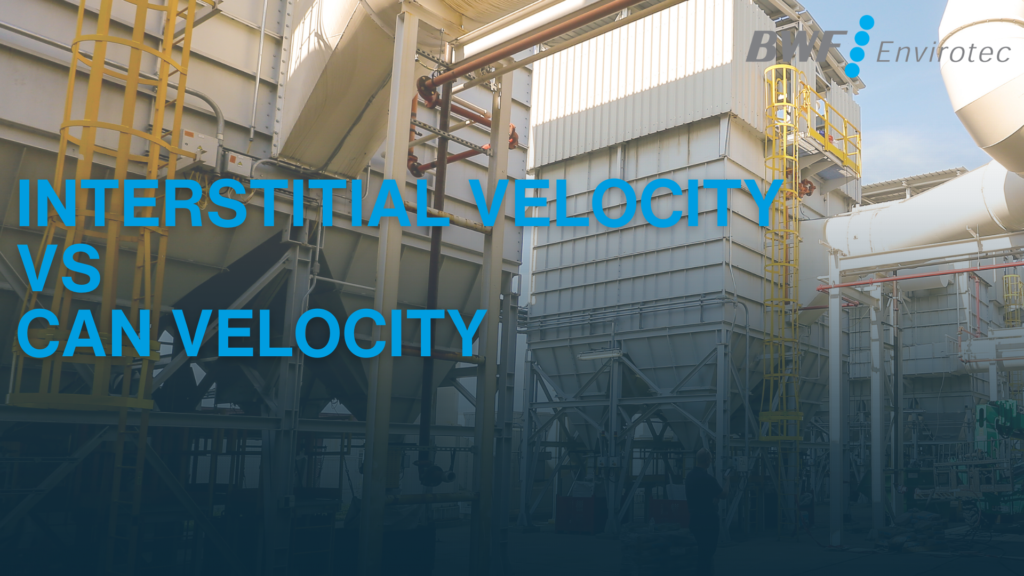
When it comes to optimizing a baghouse system, two critical airflow factors often get confused: can velocity and interstitial velocity. While they are related, they have distinct impacts on dust collection efficiency and bag life. Understanding the difference between them can help you extend the life of your filter bags.
Breaking Down the Basics – Can Velocity vs. Interstitial Velocity
Can Velocity – Managing Airflow Before It Reaches the Filters
Can velocity refers to the upward airflow speed inside the dirty air plenum—above the hopper but before reaching the bottom of the filter bags. If this velocity is too high, dust particles won’t settle in the hopper but instead re-enter the airstream, leading to higher filter loading and premature wear.
Interstitial Velocity – The Airflow Between the Bags
Once the air reaches the filter bags, interstitial velocity takes over. This is the speed at which air moves between the bags themselves. Because the available cross-sectional area decreases (due to the presence of the bags), interstitial velocity is usually higher than can velocity. If it’s too high, it can cause excessive dust re-entrainment, increasing system differential pressure and leading to shorter bag life. The challenge is to keep your interstitial velocity low to allow for effective dust collection.
Why Does This Matter for Your Baghouse?
A poorly managed can or interstitial velocity can create operational headaches:
Faster Bag Wear – High interstitial velocity increases particle impact on the bags, leading to abrasion and premature failure.
Increased Maintenance Costs – Dust that doesn’t settle properly leads to more frequent filter changeouts.
Higher Energy Consumption – More clogged filters mean higher pressure drops, forcing fans to work harder and consuming more energy.
Can Velocity Optimizations
Adjust Inlet Designs – Modifying how air enters the baghouse can help distribute airflow more evenly, reducing upward velocity and preventing excessive dust carryover.
Increase Housing Cross-Section – A larger housing allows air to spread out, lowering the velocity before it reaches the filter bags. This prevents dust from being re-entrained and improves overall collection efficiency.
Interstitial Velocity Optimizations
Increase Bag Spacing – More space between filter bags reduces the speed of air moving between them, minimizing turbulence and preventing excessive dust re-entrainment.
Use a Larger Housing – A bigger housing provides more open area between bags, naturally lowering interstitial velocity and improving filtration performance.
Find the Right Solution for Your Baghouse
Optimizing these airflow parameters can mean the difference between a smooth-running dust collection system and one that constantly demands maintenanc and eats into profits.
At BWF Envirotec, we specialize in baghouse performance optimization. Whether you need an evaluation of your current system, upgraded filter media, or expert insights into airflow management, we’re here to help.